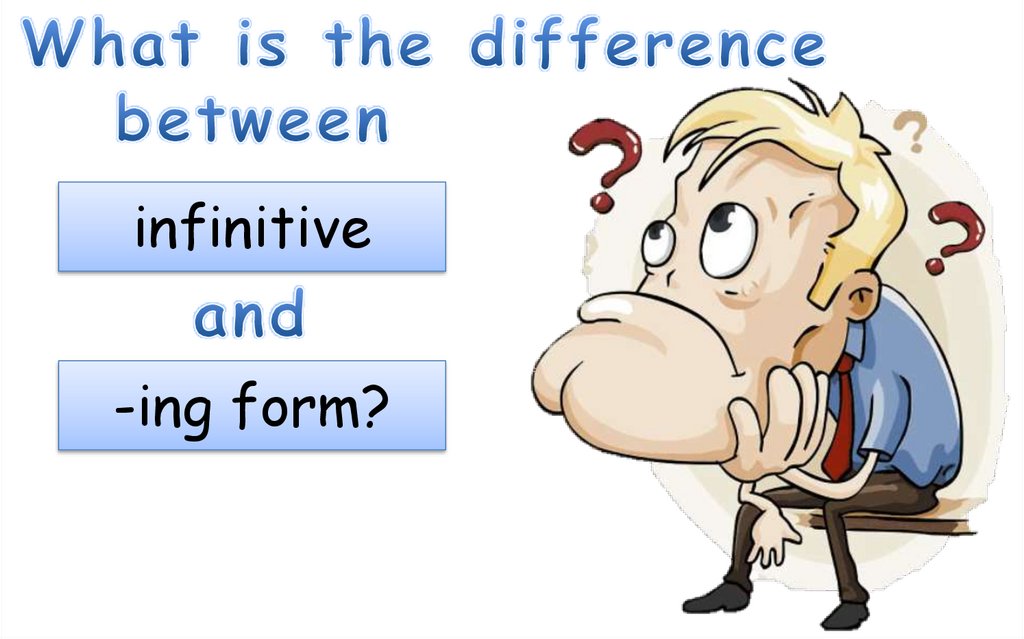Similar presentations:
Infinitive
1.
infinitive-ing form?
2.
The -ing form is used:1. As a noun in the function of the subject.
Exercising is a good for your health.
3.
The -ing form is used:2. After the verbs:
admit
fancy
prevent
appreciate
go (for
quit
avoid
imagine
save
consider
mind
suggest
continue
miss
deny
practise
activities)
You should avoid eating junk
food.
4.
The -ing form is used:3. After the verbs:
love
like
dislike
hate
enjoy
prefer
to express general preference.
Jane prefers living alone.
Jack enjoys playing his
guitar.
5.
The -ing form is used:4. After expressions such as:
be busy
there’s no point (in)
it’s no use
can’t stand
it’s no good
have difficulty (in)
it’s (not) worth
have trouble
what’s the use of
can’t help
I have difficulty (in)
understanding what he says.
6.
The -ing form is used:4. After the verbs:
spend
waste
lose
(time, money)
He spends hours reading
every day.
7.
The -ing form is used:5. After the preposition to with verbs and
expressions such as:
look forward to
be used to
in addition to
object to
prefer (doing sth to
sth else)
She prefers walking to
driving to work.
8.
The -ing form is used:7. After the verbs:
watch
listen to
notice
feel
see
hear
I saw Pam waiting for the bus.
(I only saw part of the action.)
BUT we use the infinitive without to with hear, listen to,
notice, see, watch and feel to describe a completed action.
I didn’t see Pam get on the bus. (The
action was completed.)
9.
The to-infinitive is used:1. To express purpose.
She went to the
supermarket to buy
some cheese.
10.
The to-infinitive is used:2. After certain verbs that refer to the future:
agree
promise
appear
refuse
decide
want
expect
hope
plan
I want you to come.
I expect him to be here.










 english
english








